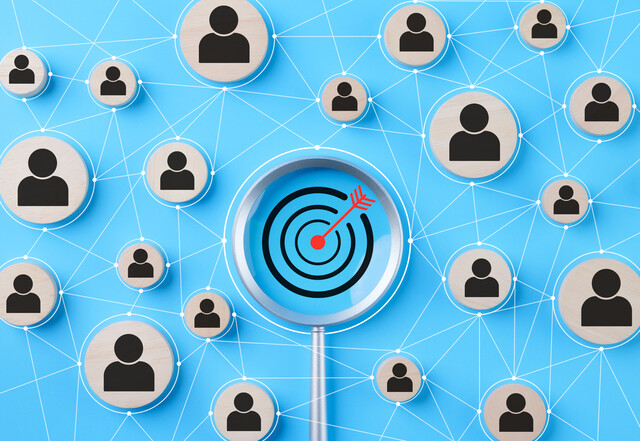The so-called "butterfly effect" never fails to fascinate me in its operation.
We certainly see its effects in customer service: How we relate to fellow staff members, even several levels removed, can often have a rolling effect, which changes how we relate to customers and vice versa. If your organization treats its customers well, it usually means they have treated you and other staff well.
Critical Success Factors
Here are several critical factors that help determine a company's sucess or failure based on how it treats customers:
1. Timeliness. Customers do not like to wait around, so answer questions quickly or at least explain why you cannot. Be precise about when something will occur, and then make sure it happens accordingly
2. Attitude. This factor is critical. When customers are treated with respect, courtesy, and professionalism, they not only appreciate the level of care but are more inclined to accept possible delays.
3. Empathy. Showing understanding and empathy more often than not will calm the most irate customer. Always treat others the way you would like to be treated or better still how they would like to be treated.
7. Dependability. When you say you are going to do something, do it.
8. Follow-up. Do not leave customers hanging, ever! If you are still working on a solution for a customer, advise him or her that the situation has not been solved yet but you and/or the company are working on it.
Consistency
Certain qualities mean different things to different people. For example, what you take as friendliness may not be perceived that way by others. It may come across as over-familiarity or not friendly enough. If you ask six different people what courtesy actually means, you will usually find six different responses.
How do you solve this dilemma if you want a consistent display of friendliness, courtesy, and responsiveness across the board from all employees? You have to define the customer service standards. You need to establish specific, objective, and measurable customer service standards. Additionally, service standards also provide a basis upon which you can properly evaluate staff performance.
And do not forget, do not assume that people automatically will understand where you are coming from or what you actually want.
Criteria
Take a moment to consider one of your recent purchases, either for your business or personal use. What factors dictated your decision to buy that product or service? Price? Quality? Customer service?
First, a lot of people would answer, "Price, of course, especially these days." Yet, if you take the time to reflect on that purchase decision, the other factors would most certainly have come into play.
Recognizing Excellence: Reward and Recognition Factors
In an organization's culture, whatever gets recognized and rewarded gets done first and best.
Every company recognition program should incorporate one or all of the following three factors to be successful:
Formality. Rewards can be offered in one department only, across a particular company, or throughout an entire corporation. Rewards should be provided for individuals or team members that have best achieved specific customer service goals. Awards could include vacations, theatre tickets with dinner and/or accommodations, or even cash.
Informality. Sometimes a slap on the back, a simple "thank you," or the boss making an announcement in front of other staffers is all it takes to make that winning employee feel appreciated and acknowledged for their efforts.
Salary and advancement. In the final analysis, staff members need to see personal benefit in improving their sensitivity toward customers and value in serving them appropriately. If some kind of advancement, whether money or promotion, does not accompany improved customer service, then the concept of service is only so much chatter.
Awareness
Outstanding customer service that builds loyal customers is today's strategic competitive advantage. When your organization has a unified and collective customer loyalty attitude, you will see your overall sales increase from repeat business and referrals from existing clients. The added benefit is that you will have a culture of high performance.
If your organization previously has invested time into improving its level of customer service, it may subsequently have switched its efforts to meeting other goals and priorities, with larger amounts of attention being directed toward quantity rather than quality.
Every company needs continually to revisit its customer service performance, keep a keen eye on customers and their views, assess the overall levels of customer satisfaction, and determine whether there are any new customer services issues that should be addressed now or in the future.
Education
Some staff members will have a greater amount of interaction with customers and therefore should be the ones who enjoy a larger proportion of education and training. Unfortunately, these are the workers who often end up with the least amount of training.
While everyone will benefit from picking up new skills and having old ones polished, do not neglect the everyday employees who are face-to-face with customers.Suggested training includes coaching sessions, team problem-solving meetings, and even public speaking techniques.
Educational efforts provided by the company could also include such items as newsletters, videos, and informal staff meetings.
Without a doubt, the maximum effectiveness is gained when training efforts combine formal and informal education strategies.
The Wisdom of Choosing Appropriate Customer Service Training
According to recent polls, approximately 70 percent to 80 percent of employees said the availability of company-sponsored training programs was a factor in deciding whether to accept a new job or stick with a current one. Yet, it also is said that the average number of hours of formal training for each employee per year is only eight to 10.
Although more companies have realized that it is smart to invest in training, they are faced with so many choices, they are often not sure where to start looking. How can the organization make sure to get the most out of its education investment?
Does your organization have ideas as to what form training should take? What are the training goals? What qualifications should employees have when they finish the training? Training can take many forms, from simply encouraging subscriptions to key trade magazines to reimbursing tuition for degree programs.
Before you decide where to put your training dollars, it is vital to do a full needs-assessment. This might involve polling employees one by one or en masse via e-mail. It would also be a very proactive and customer-friendly idea to actually ask customers where they would like to see your company improve in areas such as customer service, product innovation, communications technology, etc.
Tips: The Coaching Approach
When an employee is struggling, do you offer tips and advice?
What about when you assign team members a new project? Do you just hand it to them and let them figure out the instructions on their own? Coaching your employees is a fine art. If you do so incorrectly, you will be left with a rather ugly mess in your lap at the end of the day.
Coaching sessions should not be full of the things an employee has done wrong. They should contain positive and proactive factors as well.
Do not wait until a problem arises to speak to an employee. Schedule regular meetings with your customer service employees, reinforcing the good things before you offer suggestions on areas where they can improve.
If employees are stuck on a particular way of doing something, do not always tell them they are wrong and insist they do it your way. Suggest they try out an alternative; that way, they are much more inclined to feel empowered and part of the decision. This makes for a happier employee.
Ask your employees for suggestions. Particularly when you have had to counsel them about something that was done incorrectly at it pertains to customer service, ask them how they feel it could be handled better in future.
The Listen and Learn Approach
Every person, regardless of position, should spend some time in customer contact and service activities. Supervisors should spend time listening to their staff.
Always have your employees listen to the feedback from the customers. This is most important. The issues customers have are not made-up. Customers are not there to cause intentional harm, problems, or unnecessary work. Their issues are real and by listening to them, you learn how to deal with these issues in the future in the best way possible. Listen and document all customer issues.
One of the best examples of this is the story of Dell, Inc., the computer corporation. Michael Dell founded the corporation in 1984 with $1,000 and an unprecedented idea: to build relationships directly with customers. Dell is still one of the fastest growing companies in the industry, joining the Fortune 500 list in 1992 and achieving more than $44 billion in sales in 2004.
Dell's three golden rules:
|
1. Always listen to the customer. 2. Disdain inventory. 3. Never sell indirectly. |
With regard to staff listen-and-learn sessions, you should start by informing staff members of the reason for the session and let them know you are there to listen. Then adhere to that, so you get the proper feedback.
After any such meeting, it is important to use any feedback toward positive improvement by prioritizing what needs to be done first.






























